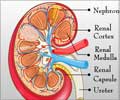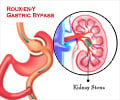Cats with chronic kidney disease could someday help inform treatment for humans with the development of new therapy to treat kidney fibrosis.

‘Cats with chronic kidney disease could someday help inform treatment for humans. The intra-renal injection of a cell-signaling chemokine – CXCL12 may hold potential for the development of new therapy to treat early kidney disease in cats, which could be then applied to the human disease in humans.’





About 58 million cats in the United States are estimated to suffer from chronic kidney disease thereby affecting 30-50% of cats age 15 years or older, according to the The American Veterinary Medical Association. A common final pathway for kidney disease in both animals and humans is the fibrosis or scarring that occurs as a result of the disease. For cats, end-stage kidney disease has no effective cure. The study team thereby sets out to test the effects of a cell-derived molecular therapy to treat kidney fibrosis in cats.
Regenerative therapies using stem cells and vascular fractions have been tested, but the collection of cells or cell fractions is expensive, time-consuming, and requires advanced cell processing capabilities not available in most veterinary general practices.
Alternatively, "The use of cell-based molecules to treat kidney fibrosis may be a promising approach. Current treatments include pharmaceutical therapies and dietary management to slow disease progression and increase longevity, and alternatives are needed," says lead author Julie Bennington, DVM, a WFIRM research fellow and Ph.D. candidate.
Cell-Based Molecules in Chronic Kidney Disease
Advertisement
It is the first study in the preclinical cat model, and, then in a pilot study in cats that may have early kidney disease.
Advertisement
This study is a good example of how a condition like chronic kidney disease (common to both dogs and cats), can help potentially to apply its aspects to the human disease in humans. The team is further preparing to set up a clinical pilot study in the US.
Source-Medindia















